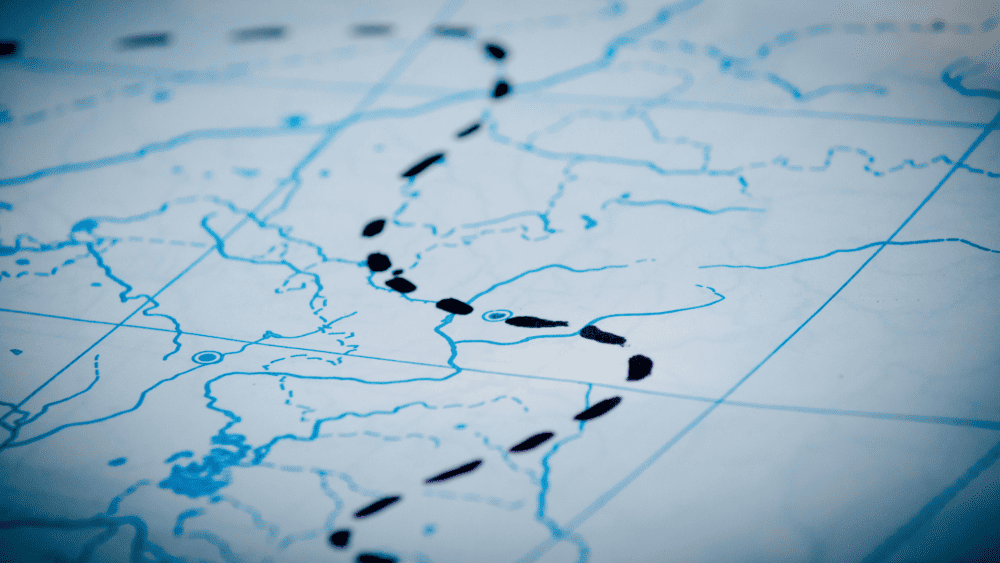As many of us are approaching the end of the working week, the various appointments in our calendars can begin to fee like a distant memory. Maybe your attention is already moving to what next week will bring.
But before skipping ahead to the future, I’m going to suggest taking a look back at your calendar for this week, and reflecting on how it actually panned out.
The map, not the territory
It’s easy to forget that a calendar is really just a plan for how you intend to spend your limited time in any given day or week. And as we all know, the plan only lasts until something comes up to upset or overturn it. Your neat blocks of time dedicated to priorities get eroded by emergencies, urgent requests and… all the other stuff that distracts us.
Just like a map provides us with a simplified view of an physical area, it doesn’t include every detail of the space, nor does it give us any information about how we’ll experience life moving through that space. Does a map tell you about the awe you’ll feel when you encounter that waterfall? Or the confusion you’ll feel when you get to the complex street junction? It does not. It just tells you how far apart landmarks are.
So should you abandon any attempt to plan your week? Not at all! Your calendar is a visual representation of time – and a reminder of the very limited time you have available. It’s an excellent idea to map out how you intend to invest it.
So why doesn’t life always turn out like our calendar?
Our limited resources
Emergencies aside, calendars fall down because they tend to focus only on time. They don’t really lend themselves to considering the demands of the activities. To put it simply, not all work is created equal.
When you put an appointment in the calendar, do you focus on how long you’ll actually need for it? Or is it a default one-hour slot? Giving thought to how much time an activity will take can really help us over-committing in any given day or week.
Time aside, we also need to consider the attention – the mental focus – we’ll need to invest in an activity. Some of these appointments are with other people – like meetings, calls and webinars. Ideally, you’ll also have blocked out time in your schedule to work on your priorities. Basically, making an appointment with yourself.
Reflecting on how cognitively challenging different aspects of your work are can help you schedule them. While some activities take more time, they might demand less in the way of attention. Attending a team update could place us in ‘receive mode’, where we’re listening to what’s going on. Leading that team update will take the same time, but require much more in the way of attention and focus. Yet in our calendars, these two appointments would look identical.
A five-minute call with a difficult customer doesn’t need much time at all, but cold require a lot of mental focus. And leave you exhausted, which brings us to the next point.
And it’s not just time and attention
At the risk of over-complicating things, there’s one more limited resource we can consider when planning our working week: energy. While time slips away as the week progresses – and we can’t make more of it – we can intentionally work around our fluctuations in energy, ensuring we get the breaks we need and the sleep that restores it.
Consider how different you might feel at midday on a Monday compared to 5pm on a Friday. How much energy will you have at these two points in time? Or even within a single working day?
Do you know your chronotype? You probably instinctively have a feel for whether you’re a morning type or an evening type. Where possible, use this knowledge to schedule work to match the time of day when you’ll be at your best.
When considering these resources, you can see whether it’s more time that’s needed for an event, or simply spreading that kind of commitment out a bit more, so it’s not so overwhelming. Do you need three hours to write that report on Monday? Or an hour per day, spread across three days?
Will you be your best self after four hours of video meetings? Will you make good quality decisions or be able to truly listen to a colleague after a day of incredibly mentally demanding work? Only you know the answer to this.
Putting this into practice
Firstly, you can begin by acknowledging that your calendar is a plan – one that you’ll probably have to deviate from. Seeing your calendar as a place for time-based commitments – to ourselves and others – helps keep it clean and containing only that which matters. Tasks should go into your task management system.
Secondly, when entering new appointments into your calendar, be realistic about the time, attention and energy you’ll need. This will be an estimation, but it’s far superior to a default one-hour-per-appointment approach.
Finally, take some time at the end of your week to review how much your calendar helped you navigate your workload, how accurate your estimations were, and how you can use this to make next week’s schedule even more reflective of your available time, attention and energy.
Your calendar can be a helpful tool in making the most of your limited resources each week. Or it can be a source of pressure and overwhelm. Like all tools, you need to use it mindfully and with intention. Make your calendar work for you – not the other way round.
Want to learn more?
Check out our recent podcast episode on getting the most from your calendar.

